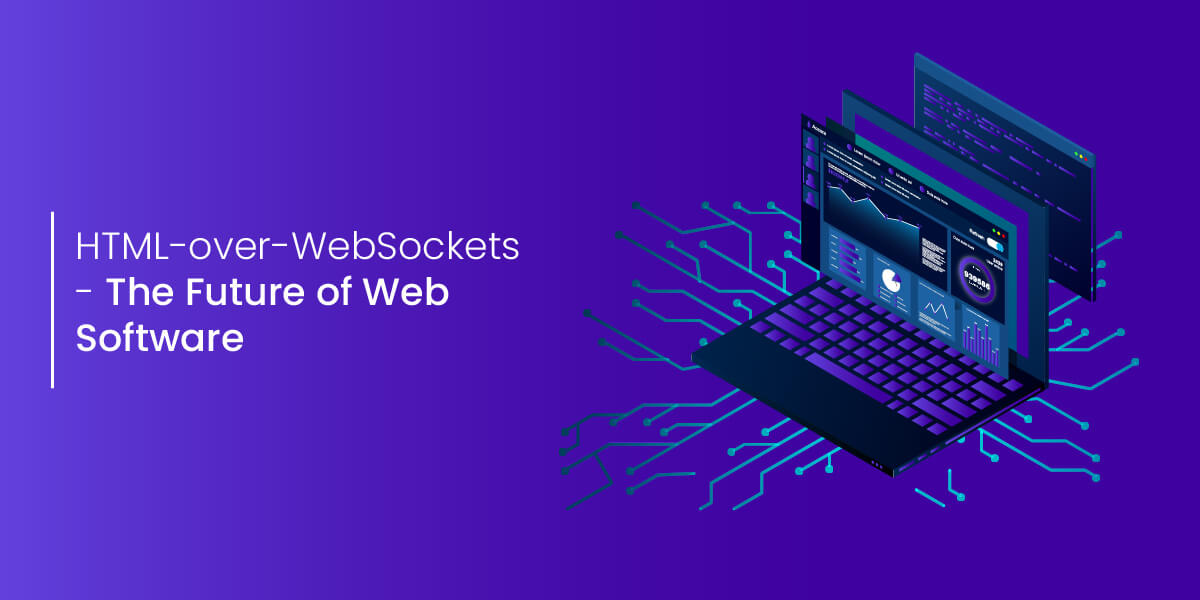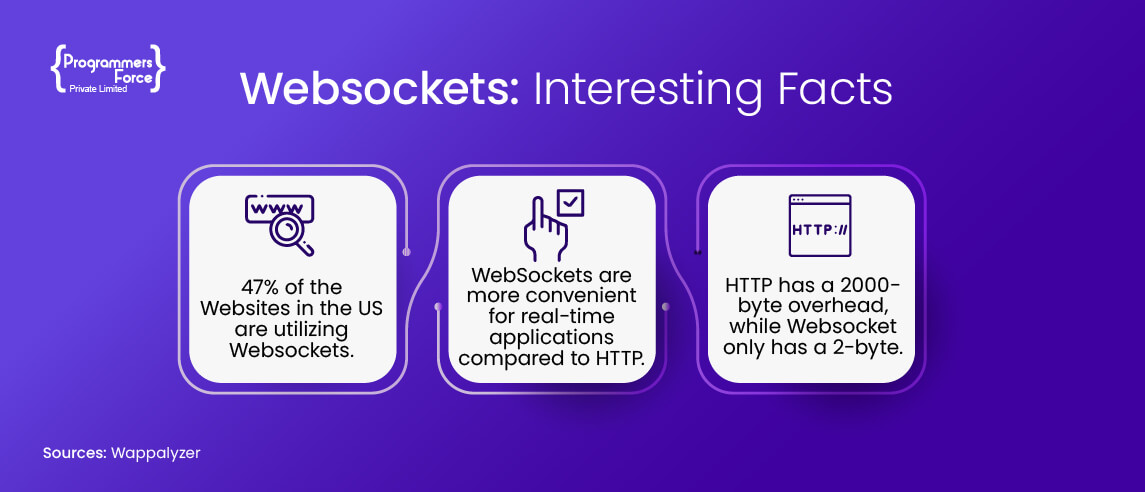
HTML-over-WebSockets – The Future of Web Software
Web applications are rapidly changing the landscape of the digital world. They are unwittingly replacing the old desktop software. In fact, it is becoming a requirement for every business to have a user-friendly digital platform. According to research, more than 252,000 web applications are created every day. SPA (Single Page Applications) and MPA (Multi Page Application) are two main design patterns to create scalable and multi-purpose web applications. SPAs are generally more widely utilized worldwide as they provide a better model of interaction, faster loading times, and enhanced data retrieval. The best way to curate efficient SPAs is to optimize the interconnectivity between the application’s front-end and back-end.
HTML-Over-Websockets: Future of WebApps
The traditional pattern of connecting the client side (front-end) and server-side (back end) is costly and requires highly skilled developers. Websockets is getting renowned in modern web development services as it enables two-way interactive communication sessions between the client’s browser and server architecture. The traditional WebSocket utilization approach is also starting to change as many firms are acknowledging the benefits of modern SPA patterns. The one approach that is gaining traction is the serving of HTML-over-Websockets instead of JSON (Javascript Object Notation) files.
Should we Use HTML in Websockets?
Rendering HTML over WebSockets can be effective as it improves the performance of single-page web applications. It enables rendering HTML on the server side, eliminating JSON processing operations on the client side. Using WebSockets for this approach provides continuous data streaming with a full-form bidirectional connection.
What is WebSocket?
Websocket is a communication protocol just like the HTTP (HyperText Transfer Protocol) that bridges the client and server of any web application. Websocket is a full-duplex protocol that mainly starts with ws://. According to the bidirectional communication protocol, the connection between the client and server is kept alive until one party terminates it, either the client or the server itself. For instance, after initiating a connection between the client and the server, it forms a new connection called “Websocket” that remains in place until termination. This is why it is also referred to as a bidirectional protocol, as messages are exchanged in multiple channels.
Traditional Request and Response
The traditional request and response cycle between the browser and server involves HTTP requests. The front end generates the requests to obtain a response from the server. The response is mainly in the form of JSON file format, which is raw information. The data from those files is then parsed into Javascript, creating an HTML structure presented to the front-end client.

What is HTML-over-WebSockets?
The major problem in front-end and back-end communication is the difference between programming languages. JSON acts as a bridge between the client and server sides which forms plain javascript upon conversion. As an alternative to this approach, HTML-over-Websockets is a relatively better way. The front-end initiates the app requests in the form of URLs, in response to which the backend returns HTML fragments that the front-end puts into the DOM (Document Object Model) of the webpage. Chris McCord, the creator of Phoenix introduced the technology in LiveView at the ElixirConf in 2019. This approach significantly reduces the use of javascript as the backend constructs the HTML fragment, speeding up the interconnectivity. The HTML-over-Websocket approach is resource hungry but provides a much better latency over the internet.
How Does it Work?
The HTML-over-Websockets approach serves the front end with HTML fragments.
- The bidirectional communication kicks things off as the client requests the data that is forwarded in the form of a JSON request.
- The Client and the server establish a webscket channel. The server then responds by sending the appropriate data in the form of HTML and Javascript files directly to the front end.
- The query from the client is called a component request. The server processes it using relevant backend logic and proper templating systems through the WebSocket channel.
- Finally, the front end updates the DOM to display the content on the screen.
Advantages of HTML-over-WebSockets
Different frameworks emphasize sending HTML-over-Websockets. The approach has a lot of benefits in modern-day applications as it transforms the traditional data interchange in SPAs creating a real-time experience without parsing Javascript.
Back-end Processing
HTML-over-Websockets boost web application performance as the HTML rendering is solely done at the back end. This separates the front-end and back-end processing, providing efficiency in logical operations. It is fast to download HTML, as every browser supports it.
Real-Time Connectivity
HTTP cycles get terminated after the query is sent from the server, but the HTML-over-WebSocket technology maintains continuous connectivity with the server. It improves real-time applications and can be used in different applications. For example, modern chat applications use WebSockets to establish connections for broadcasting and exchanging messages among the audience.
Faster than HTTP
As the HTML fragments are using WebSockets technology, the communication becomes much faster than the HTTP transfer protocol. For instance, Gaming apps focus on faster performance as the data is continuously sent over to the server without refreshing the UI repeatedly.
Compatible with Slow Networks
HTML-over-WebSockets is suitable for slow networks as it does not terminate the connectivity after a response is sent from the server. It keeps the single connection open while eliminating latency problems from traditional methods. It is almost six times faster than HTTP. Also, the SPAs built using the modern approach hardly need javascript parsing, enabling faster load speeds.
Final Thoughts
The HTML-over-WebSockets approach is relatively new, and tech firms see it as the future of web development technologies. The adoption is growing, and more tools are being introduced every month by Information technology sector companies. Every modern development platform provides Websocket interconnectivity, such as ws, and socket.io, for the NodeJS implementation. The method will soon transform the business landscape of web software applications. The HTML-over-WebSockets approach will significantly improve the performance of apps that need continuous connectivity from the server, such as chatbots and real-time assistance apps. The WebSocket approach might replace the traditional HTTP request and response cycle, improving the overall connection and user experience.






